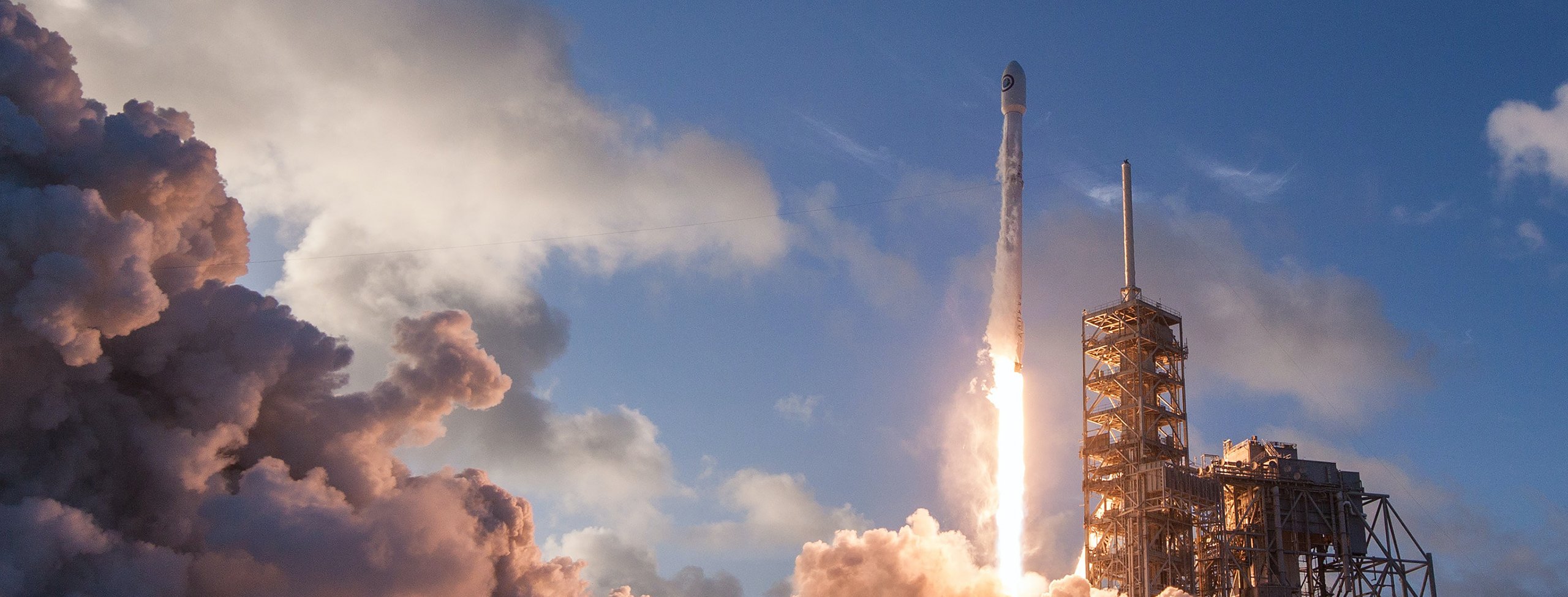
19 November 2024 • 11 minute read
New federal space-related export rules strengthen US national security
The US Departments of State and Commerce have recently issued a series of rules that modernize space-related export controls to make the US more competitive and to strengthen international space partnerships while protecting US national security.
On October 23, 2024, the State Department’s Directorate of Defense Trade Controls (DDTC) issued a Notice of Proposed Rulemaking (DDTC NPRM) that would amend the International Traffic in Arms Regulations (22 CFR parts 120-130, ITAR) to (1) revise the US Munitions List’s (USML) structure, terminology, and concepts, (2) create three new license exemptions, and (3) revise USML Category IV (launch vehicles, guided missiles, ballistic missiles, rockets, torpedoes, bombs, and mines) and Category XV (spacecraft and related articles).
Concurrently, the Commerce Department’s Bureau of Industry and Security (BIS) proposed several amendments to the Export Administration Regulations (15 CFR parts 730-774, EAR), including:
- BIS Notice of Proposed Rulemaking (BIS Proposed Rule) that would amend the controls on certain space-related items to conform with the amendments in the DDTC NPRM
- BIS Final Rule that removes license requirements for certain spacecraft and related items for Australia, Canada, and the UK, and
- BIS Interim Final Rule (BIS IFR) that reduces license requirements for certain less sensitive items.
The public may submit comments to DDTC regarding the DDTC NPRM and to BIS regarding the BIS Proposed Rule and BIS IFR.
Comments should be submitted on or before December 23, 2024, to be considered.
DDTC NPRM
The DDTC NPRM would amend the ITAR by (1) clarifying and standardizing certain terminology in the USML, (2) creating civil-space related license exemptions, and (3) revising certain items within Categories IV and XV of the USML.
USML modernization
DDTC proposes to modernize the USML in several ways:
- Remove or relocate language from several notes within the USML into either the descriptions and definitions in 22 CFR § 121.0, or into the text of the relevant USML paragraphs
- Add definitions for the following terms:
- Amateur rocket
- Amateur rocket motor
- Bomb
- Excluded National Aeronautics and Space Administration (NASA) spacecraft
- Ground sample distance
- Hosted payload
- Human spaceflight preparations
- Loitering munition
- Mine
- Payload
- Primary payload
- Range
- Real-time
- Secondary payload
- Spacecraft
- Spacecraft bus
- Spacecraft housekeeping data and output
- Spacecraft payload
- Spectral bandwidth
- Remove the term “specially designed” from certain USML paragraphs where the term does not narrow the scope of the paragraph, or otherwise may be replaced with technical control parameters that more accurately define the controlled item
- Revise USML paragraphs to include the specific defense article at the beginning of each paragraph, followed by the specific control parameters
- Restructure certain USML control text to align with the composition of the USML described in 22 CFR § 120.10(b)
- Make additional clarifying edits
Civil space-related license exemptions and licensing provisions
The DDTC NPRM includes three new license exemptions intended to promote the US civil space industrial base, while maintaining US national security and foreign policy interests. The DDTC NPRM also would codify as a license exemption the current guidance note in the USML regarding defense articles incorporated into spacecraft subject to the EAR.
22 CFR § 126.8(a) – Official space agency exemption
DDTC proposed adding a new license exemption to 22 CFR § 126.8(a) that would authorize certain transfers of defense articles and defense services made pursuant to the following official US government agency space programs:
- NASA’s Lunar Gateway
- NASA’s Mars Sample Return
- Nancy Grace Roman Telescope
- The Orion spacecraft
§ 126.8(b) – Space activity exemption
The second license exemption proposed in the DDTC NPRM would provide authorization for the following:
- Certain transfers of defense articles and certain defense services supporting space launches
- Certain services related to the transmission of space launch vehicle telemetry
- Certain services to support collaboration with foreign persons when on-orbit defense articles are utilized in support of fundamental research
- Certain services associated with radiofrequency transmissions using on-orbit defense articles, including geolocating certain automated information broadcasts, emergency transmissions, and cellular transmissions
§ 126.8(c) – Space tourism and research exemption
The third proposed license exemption would authorize certain transfers of manned spacecraft for space research. The exemption would only apply to certain basic and applied research intended for publication, and not to the engineering development phase of research and development, or for the design and development of a defense article.
§ 126.8(d) – Special licensing provisions for defense articles incorporated into spacecraft subject to the EAR
The DDTC NPRM also would authorize certain transfers of defense articles when incorporated into spacecraft subject to the EAR. This exemption would reflect guidance that currently exists within two existing USML notes.
Satellite signature reductions
DDTC also is soliciting comments regarding regulatory changes or clarifications to facilitate industry efforts to reduce the apparent magnitude of satellite brightness as viewed from Earth.
USML category revisions
The DDTC NPRM would make numerous updates to Categories IV and XV. The changes are designed to address controls that were identified as potentially requiring addition, removal, revision, or clarification of, for example: amateur rockets, hypersonic glide vehicles, re-entry vehicles, range and payload definitions, launch platforms, propulsion systems, rocket stages, motors, engines, thermal protection systems, self-destruct systems, separation systems, safing, arming, fuzing, and firing (SAFF) components for missiles and rockets, among others.
BIS Proposed Rule: Updates to space export controls
The BIS Proposed Rule would amend the EAR to conform to the ITAR proposed rule in two ways. First, the BIS Proposed Rule would modify Export Control Classification Numbers (ECCN) 9A515, 9D515, and 9E515, and adds a new ECCN 9C515. Second, the BIS Proposed Rule would create a new license exception under 15 CFR § 740.26 for Commercial Space Activities (CSA) for official space agency programs, space tourism, and research. License exception CSA would authorize exports, reexports, and in-country transfers of items subject to the EAR for the following activities:
- Items subject to the EAR destined for certain “official space agency programs,” defined as the following:
- NASA’s Lunar Gateway
- NASA’s Mars Sample Return
- Nancy Grace Roman Telescope
- The Orion spacecraft
- Commercial Low Earth Orbit Development program
- Habitable Worlds Observatory
- Manned spacecraft subject to the EAR and classified in ECCNs 9A004 or 9A515 and parts, components, accessories, and attachments subject to the EAR solely for use in or with such spacecraft for space tourism, provided the following requirements are satisfied:
- The spacecraft must be limited to suborbital trajectories
- The purpose of the activity must be limited to either space tourism or supporting fundamental research
- The activity must not transfer registration, control, or ownership of the spacecraft to a foreign person, and
- The spacecraft’s destinations, including planned diverts and contingencies, must be approved by the Federal Aviation Administration or its foreign equivalent in all countries, and must not include any destinations listed in Country Groups D:5 or E.
BIS Final Rule: Export control amendments
BIS also published the BIS Final Rule to amend the EAR, effective October 23, 2024. The BIS Final Rule removes controls for certain spacecraft and related items for exports and reexports to Australia, Canada, and the UK. Specifically, the BIS Final Rule revises the Regional Stability (RS) Column 1 controls in 15 CFR § 742.6(a)(9) to except exports and reexports to Australia, Canada, or the UK from the worldwide license requirement for spacecraft and related items classified under ECCN 9A515.a.1, .a.2, .a.3, .a.4, .g, and ECCN 9E515.f.
BIS IFR amendments to the EAR
BIS published the BIS IFR, effective October 23, 2024. The BIS IFR made several revisions to the EAR:
- Reduced the licensing requirements on certain items classified under 9A004, 9A515, 9D515, and 9E515. The BIS IFR revised the reasons for control for certain items controlled under ECCNs 9A004 and 9A515 from RS Column 1 and National Security (NS) Column 1 to RS Column 2 and NS Column 2. The BIS IFR also revised the controls in 9A004, 9A515, 9A604, 9D515, and 9E515
- Revised license exception governments, international organizations, international inspections under the Chemical Weapons Convention, and the International Space Station (GOV) to clarify that Space Act Agreements to which NASA is a party is within the scope of the authorization provided by the license exception
- Added a new Note 1 to 15 CFR § 744.7(a) to clarify that a shipment or transmission of items to a launch platform or facility located in international waters is considered to be an export or reexport to the country or countries the platform or facility is owned by, controlled by, or being operated on behalf of
- Revised the Russia and Belarus sanctions in 15 CFR § 746.8 to add license exception GOV as authorization to overcome the licensing requirements under that section for certain items subject to the EAR specified in ECCN 9A004 when the items are destined to Russia on short notice and are for use in, with, or for the International Space Station
Conclusion
The rules reforming space export controls are a culmination of the work of the US Departments of Commerce and State with the National Space Council that started over five years ago and spanned two presidential administrations. The objective of this long-awaited reform is to ensure US competitiveness in the global space economy while protecting national security with appropriate and tailored controls to prevent access to US technology by US adversaries. Reforms are likely to continue in 2025 and beyond. Representatives at a public meeting held on November 6, 2024, for example, indicated that changes to the BIS IFR will likely be finalized before January 20, 2025.
While these new rules reduce the licensing burden on companies, particularly for exports to certain US partner countries, companies should monitor other changes in each of these partner countries’ respective export control laws. For example, Australia recently updated its export control laws to include new controls on the supply of certain technology to foreign persons within and outside of Australia (along with other changes). Companies doing business in partner countries should ensure that their global compliance policies and procedures are taking into account changes along with the reforms to space export controls.
DLA Piper’s Space Exploration and Innovation practice provides global coverage and deep experience with complex matters in the commercial space industry. To find out more about the implications of these new rules for your business, please contact any of the authors.


